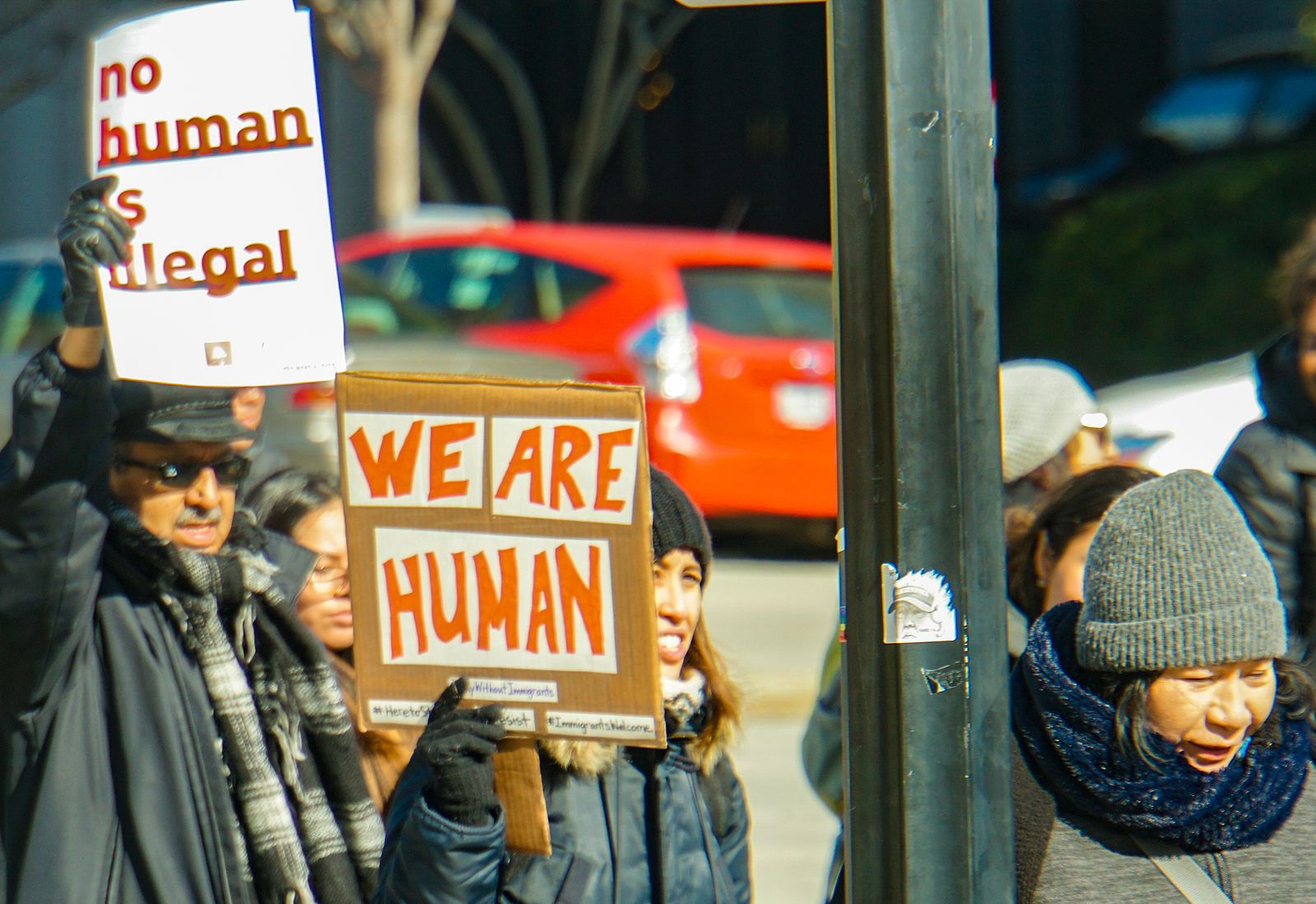Trump’s Executive Order and the Rise of Private Immigrant Detention Facilities

Image “2017.02.16 A Day Without Immigrants, Washington, DC USA 00840” by Ted Eytan from Wikimedia Commons / CC BY 2.0
As the nation focused its attention on Trump’s tweets, his executive order regarding undocumented immigrants and border protection went unnoticed by mainstream media. The order was signed on Jan. 25, two days before Trump’s executive order banning entry to people from seven predominantly Muslim nations. It outlines the construction of a wall along the Mexico-U.S. border and the expansion of border patrol agents. In addition, Trump’s order specifically calls for the creation of more detention facilities along the border – centers that endanger detainees, especially if they are privatized.
While immigrant detention centers have existed in the past, Trump’s plan to expand their construction, paired with other regulations, will increase the number of immigrants in these facilities. In doing so, prison contractors will see an increase in their profits as detention facilities become privatized. The government contracts for-profit prison corporations in order to decrease the amount of federal funding spent on detention facilities. In doing so, privatized facilities can be built without consent from voters, while prison corporations have almost full control of running these detention centers. Today, 9 out of the 10 largest detention centers are privately owned.
Detention facilities are designed to hold undocumented people who have been imprisoned by Immigration and Customs Enforcement (ICE) before they are deported. In addition, these facilities serve as channels through which undocumented people can meet with asylum officers and seek asylum from their country of origin. Section 5 of Trump’s order mentions sending additional “asylum officers to immigration detention facilities for the purpose of accepting asylum referrals.” However, the legacy of the conditions of these facilities warrants concern over their future construction, the effectiveness of asylum officers, and the humane treatment of detainees, especially as Sections 2 and 4 of Trump’s executive order expand the criteria enabling the arrest of an undocumented person.
The order builds upon President Obama’s immigration policy, specifically echoing his criteria for deportation. In his second term, Obama reformed his immigration policy to prioritize more extreme offenses, rather than minor offenses. However, Trump’s order extends the definition of “criminal” to include minor crimes, or anything deemed a “public threat.” Trump outlines in another executive order regarding public safety that a public threat is determined by the “judgment of an immigration officer,” which dangerously increases the power and authority of an ICE officer.
Further broadening the potential for arrest, Trump’s order assigns ICE officers the duty to deport “aliens who have been convicted of any criminal offense.” For Trump any crime warrants deportation, extending the risk of deportation to something as minor as a traffic ticket, use of a “fake identity card… driving without a license, or [receiving] federal food assistance.”
The executive order’s vague criteria for arrest increases the power of ICE officials and any local police officials agreeing to follow Trump’s order while ensuring high rates of imprisonment for detention centers. Although the Los Angeles government and other sanctuary cities have vowed not to follow Trump’s executive order, ICE officials across the nation have full authority to dictate a potential threat.
In the eyes of for-profit prisons, Trump’s order ensures large numbers of immigrant detainees in detention facilities. If the order is enacted, expanding investment in detention facilities will prove to be a successful financial move for privatized prison companies, regardless of the costs imparted on the lives of other humans.
Since Trump signed the executive order, there has been a reported increase in the stocks of private prisons. Private prison corporations have benefited from previous detention policies, and will continue to profit from increased immigrant imprisonment. Due to past privatization, private prison corporations, including GEO Group and Corrections Corporation of America, have made a “combined 32 billion in annual revenue.” Knowing the potential for profit, privatization will only become a greater concern as new detention facilities are constructed. Moreover, the history of private detention facilities causes uneasiness.
While the executive order justifies expanding detention centers as a way to process asylum seekers at risk of deportation, the historical role of detention centers proves these facilities do not aid asylum seekers. Rather, treatment of detainees in detention centers, both in the past and today, frequently constitutes human rights violations. Detention facilities imprison undocumented immigrants in overcrowded centers where, as one detainee named Zelaya describes, detainees are treated “like dogs.” To protest the conditions, Zelaya and others participated in a hunger strike. However, Zelaya was punished and placed in solitary confinement, highlighting the attempt by immigration officials to placate resistance in detention centers.
In many cases, health care is delayed for detainees; they are forced to live with pain for months without critical treatment after a serious health diagnosis. For transgender immigrants, the risks of human rights violations are greater. To avoid the possibility of sexual assault in detention centers, immigration officers place transgender detainees in solitary confinement for up to “23 hours per day, for weeks or even months at a time.” In isolation, they lack access to legal representation, which prevents any possibility of bettering their situation. With little connection to the outside world, transgender detainees are at a higher risk for suffering from mental health and health mismanagement.
The allure of profit serves an incentive to further detain undocumented people with little regard for their health and safety. As seen in Eloy, a private detention facility in Arizona, immigrant detainees are forced into life-threatening conditions. Eloy is just one example of the failures of a private detention facility. Since 2003, the facility reports 15 prisoners have died. According to Human Rights Watch, low quality medical care and disregard for detention regulations have caused seven of the 18 deaths the ICE has recently investigated nationwide. Improper medical care is linked to the lack of attention given to ill inmates. Specifically, research on the seven deaths is tied to doctors’ inability “to follow up on critical symptoms” and failure to quickly “seek emergency treatment.”
The possibility of death in detention centers only increases as the ICE officers are granted elevated authority, detention centers become privatized, and facilities are rendered overcrowded and unsanitary. However, as ICE officers attempt to practice their reestablished authority, resistance from immigrant communities against Trump’s executive order has mounted across the country.
On Feb. 8, over 100 people protested the arrest of Guadalupe Garcia de Rayos, a 35-year-old undocumented woman, in Phoenix, Arizona. Garcia de Rayos had lived in the United States since she was a teenager. Eight years ago, ICE attempted to deport Garcia de Rayos; still, she was allowed to stay in the U.S if she checked in regularly with immigrant officers to prove she did not constitute a public threat. However, in her last meeting with immigration officers, Garcia de Rayos was not granted stay. Despite her non-violent record, deportation of Garcia de Rayos was prioritized under Trump’s executive order.
While she was in the custody of immigration officers, demonstrators, including her two children, joined together to block the van set to deport their mother. Following Garcia de Rayos’ deportation, protests against Trump’s executive order erupted.
The day after the Phoenix demonstrations, Los Angeles immigration activists gathered together to protest Trump’s decree and future deportations. Resistance grew to a national level on Thursday, Feb. 16, as many immigrants stayed home, closed their businesses, and avoided consuming at stores. Participating in the national “A Day Without Immigrants,” immigrants and allies attempted to show the nation the crucial role of immigrants and how their absence would drastically hurt the nation economically and culturally.
Protestors and immigrant communities are moving out of the shadows. As ICE officials throughout the country follow Trump’s executive order, calls for an increase in private detention centers will meet resistance. As history shows, these facilities place people in harmful conditions while processing their removal from the United States. As families fear separation, resistance from immigrant and undocumented communities will continue to challenge the executive order.




